
© Rosalie O’Connor. (Click image for larger version)
American Ballet Theatre
Tchaikovsky Spectacular:
July 6: Mozartiana, Nutcracker pas de deux, Souvenir d’un lieu cher, AfterEffect
July 8: Mozartiana, Souvenir d’un lieu cher, Tchaikovsky Pas de deux, Aurora’s Wedding
★★★✰✰
New York, Metropolitan Opera House
6,8 July 2017
www.abt.org
Fin de Fiesta
The American Ballet Theatre spring season ended with a “Tchaikovsky Spectacular” – a whirlwind of ballets set to music by Tchaikovsky, a sure crowd-pleaser. The programs differed slightly, though most were anchored by George Balanchine’s 1981 Mozartiana and Alexei Ratmansky’s Souvenir d’un Lieu Cher, created for the Dutch National Ballet in 2012. (This was its NY premiere.) Some ended with Aftereffect, by the much-admired ABT principal dancer Marcelo Gomes; others with the final act of Sleeping Beauty, performed in Ratmansky’s 2015 version, reconstructed from early twentieth-century notations.
One can’t speak of these ballets without mentioning the richness and sweep of Tchaikovsky’s melodies, especially for the solo violin. In the past few seasons, ABT has been lucky to have a very fine concertmaster, Benjamin Bowman. This week, especially, his sweet, singing sound was like a voice soaring from the pit and enveloping the dancers in a silvery ribbon of sound. What would Mozartiana be without the violin’s virtuosic, witty repartee? Or Souvenir d’un Lieu Cher without the glowing, almost painful longing expressed by the violin’s gleaming voice? Alas, Bowman departs at the end of the season to take up a post as provisional concertmaster at the Metropolitan Opera. Exciting for him, dismaying for us.

© Rosalie O’Connor. (Click image for larger version)
The end of the season also brought promotions. Calvin Royal III, elegant and lyrical, was finally made a soloist, after seven years in the corps. He was the most striking and stylish of the Prince Cocoas in Ratmansky’s Whipped Cream earlier in the season. Devon Teuscher, promoted to principal, has also been in the company since 2007; of late, she has shown a keen sense of drama in ballets as diverse as Swan Lake and Antony Tudor’s Pillar of Fire, as well as unflappable technique (beautiful turns!). Sarah Lane, who joined in 2004, has finally come into her own, after years of tightening up under pressure. The new principal had her much-lauded débuts in Swan Lake and Giselle (which I didn’t see) and gave an intense performance in Ratmansky’s Souvenir (which I did see). The biggest surprise was Christine Shevchenko, who started out the season as a promising soloist with her first lead, in Don Quixote, only to be assigned three performances of Corsaire (stepping in for injured dancers) and polishing off the run with impressive performances in Whipped Cream and Mozartiana.

© Rosalie O’Connor. (Click image for larger version)
These promotions followed the retirement of two of the company’s remaining Russian ballerinas, Diana Vishneva and Veronika Part. (Maria Kochetkova, shared with San Francisco Ballet, is the third, but sat out the season due to injury.) Part’s time at ABT has not been easy; despite obvious dramatic gifts and a beautiful legato quality, she has proven an un-even performer, with good nights and bad nights. Perhaps because of this, she has been less and less present in the company rep. Her final appearance this week was in Mozartiana, a ballet to which she is not particularly suited. She is monumental in the slow, prayerful “preghiera”, but the quick, witty Theme and Variations that follows is all about brilliant footwork, not Part’s forte.
Of the three Mozartiana lead dancers I saw, Shevchenko was the most sparkling, dancing it with a kind of glowing ease. In fact, this was true of all her débuts – nothing seems to faze her. She had a happy, affectionate rapport with her partner, David Hallberg, who danced with his characteristic nobility and purity of line. Even for him, though, the devilishly fast footwork was a test. The cast was completed by a stylish Arron Scott, dancing the sprightly gigue. Of the three men I saw, he was the only one who managed to avoid cuteness, not easy when wearing short trousers and popping into the air like a boy on a pogo stick. In the July 8th cast, Seo was glamorous – her bourrées are especially lovely – but less musically sharp. Corey Stearns, elegant in the upper body, was taxed by the unforgiving footwork and began to tire toward the end. Jeffrey Cirio gave a crisp account of the gigue. In the stately minuet, Catherine Hurlin stood out for her relaxed musicality. In general, the ballet could be danced more sharply and at a faster tempo, to accentuate the wit built into each variation.

© Gene Schiavone. (Click image for larger version)
Ratmansky’s Souvenir d’un Lieu Cher turned out to be a mysterious little ballet, a double pas de deux that captures, in two movements from Tchaikovsky’s eponymous piece for violin and piano (orchestrated by Alexander Glazunov), the complex history of a quartet of characters. In the opening “Meditation,” the violin melody is like a haunting memory. The four dancers enter, one by one, each from a different corner; they meet, dance together, converse, suffer disappointments, console one another. At times you wonder whether you are seeing two couples or one, exploring different versions of what might have been. The couples move in and out of sync, echoing each other, then diverge, unspooling into separate, private dramas. No-one leaves the stage – the four are bound together by experience and bonds of love and loss. At one point, one of the men reaches for the other man’s partner; she pulls away, sorrowfully, as if the two had a past history, painful to both. The man retreats; she collapses. But then he dances a rapturous duet with his own partner, observed by the other two. A single movement of Tchaikovsky seems to contain a complete portrait of four interconnected lives. The second movement, a scherzo, is more abstract; the dancers enter and exit, alone or in twos, offering glimpses of their individual personalities. Themes from the first movement re-emerge, but with a lighter touch. Both casts were strongl all the dancers created distinct “characters” within the group. I found Stella Abrera, Marcelo Gomes, Sarah Lane, and Alban Lendorf particularly moving, individually and together. You believed in their stories.
On July 6th, Misty Copeland was convincingly rapturous as Sugarplum in Ratmansky’s Nutcracker pas de deux, illuminating the moments of childlike wonder in the choreography. Whiteside, always a confident partner, managed to save a big overhead lift that teetered on the brink of disaster; how he did it is anyone’s guess. He was equally confident, if a little rough, in Balanchine’s Tchaikovsky Pas de Deux on July 8th. Whiteside could stand to refine some details, but he dances with a panache equaled by Isabella Boylston’s voluptuous, breezy attack in this bubbly showpiece.
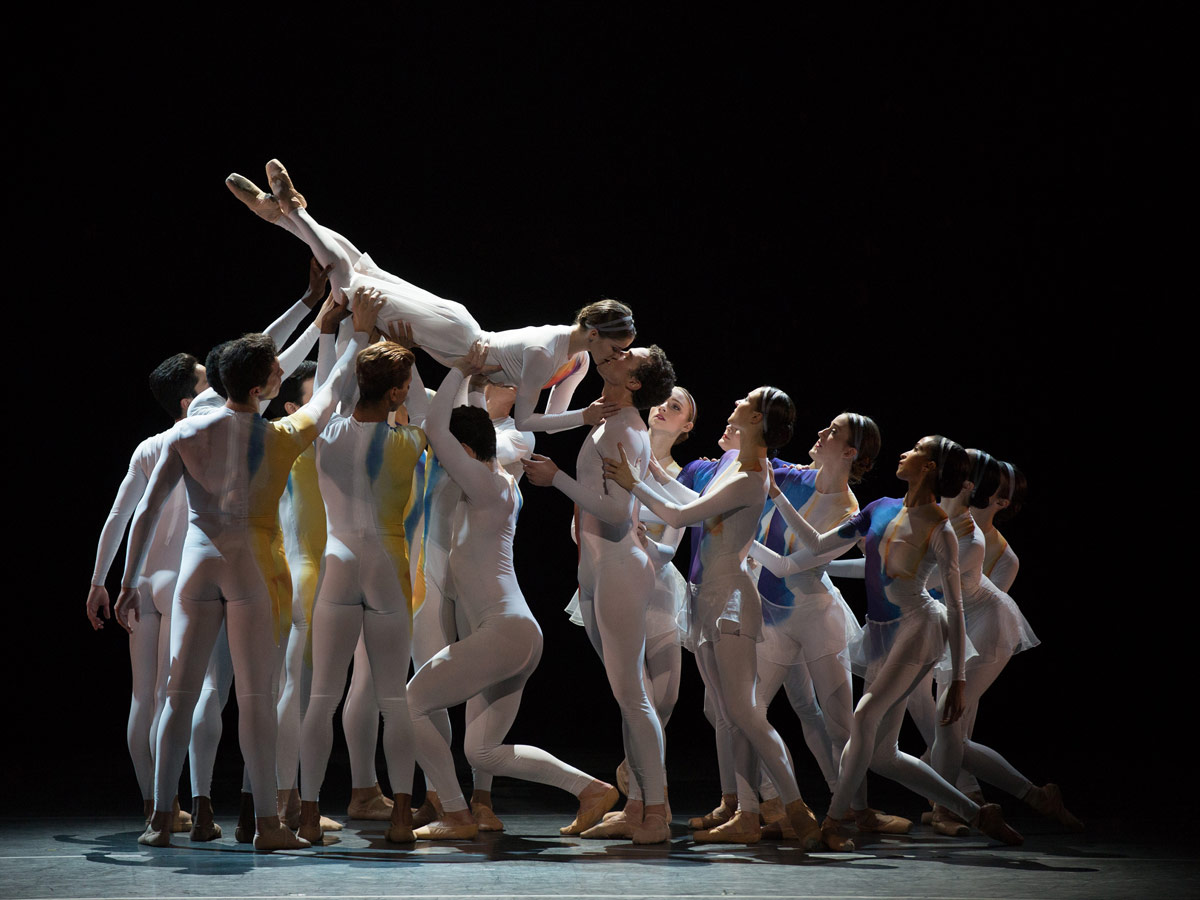
© Rosalie O’Connor. (Click image for larger version)
Marcelo Gomes’s Aftereffect and the third act of Sleeping Beauty were the big closing numbers. With a cast of 27, Aftereffect is Gomes’s most ambitious work to date. The company dances it with pulsing energy; in fact, energy is perhaps its greatest quality. It feels alive, even if the details don’t always add up. The opening section is a big macho extravaganza, full of heroic poses, man-on-man partnering, squats, rolled shoulders, running. Then comes a Serenade-like elegy in which a woman is lifted again and again, held aloft like a spirit paying a visit to a past love – her character is called “His Loss.” After a pretty and virtuosic section for the female ensemble, the man meets “His Hope,” an equally heroic male figure who leads him out of his brooding and back into the company of his fellow dancers. It’s all very heartfelt if a little overblown. Stearns looked appropriately stoic as the lone figure in the eye this manly storm, but it’s really a ballet about the group. The company shines.
It was good to see Sleeping Beauty again, though some of the details – low, decorous legs, lively changes of focus for the head and shoulders, shifts of direction and mood – have lost some of their sparkle since last year’s performances. Cassandra Trenary and Joseph Gorak danced impeccably as Aurora and the Prince, but they were neither particularly spontaneous nor expansive. This year, two of the divertissements were replaced by alternative divertissements, one (a trio for two Porcelain Princesses and a Mandarin set to the Tea music from Nutcracker) by Bronislava Nijinska and the other (the Three Ivans) by Ninette de Valois. The Porcelain Princesses item was particularly witty: the two ladies, in their voluminous dresses, showed off delicate footwork while a man turned and flicked a paper umbrella, or opened and closed it like a bellows. De Valois’ set piece for the Ivans was a Russian dance, full of squat kicks and split jumps.
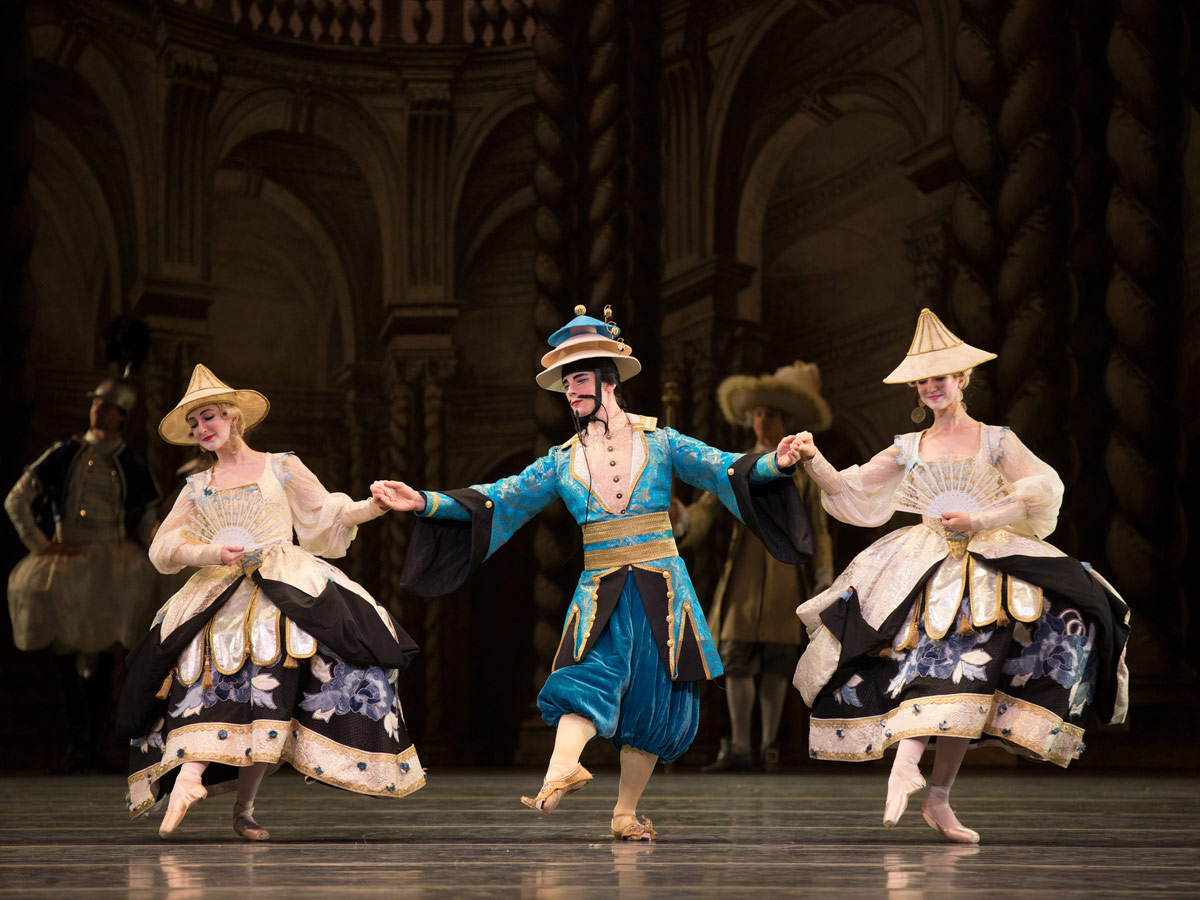
© Rosalie O’Connor. (Click image for larger version)
It’s been a good season at ABT. The company still performs some clunkers (like its Corsaire and its outdated Swan Lake), but with each passing season, the repertory becomes more rich, less hoary. And the dancers are rising to the occasion.












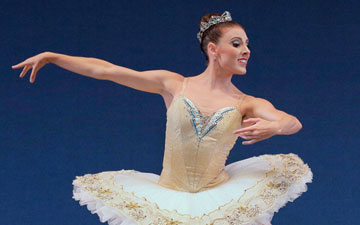

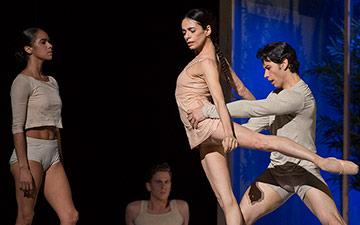

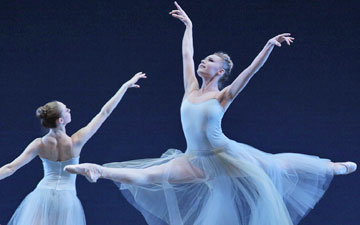
You must be logged in to post a comment.